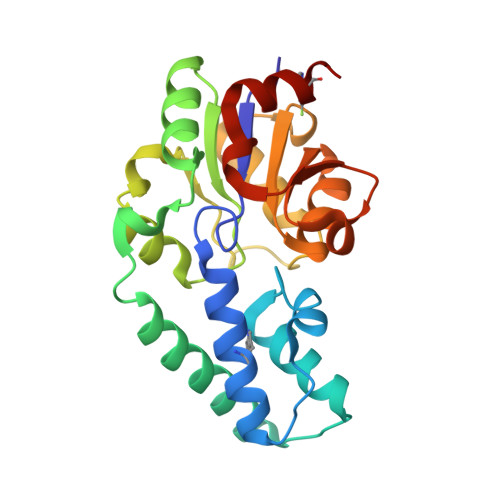Observing enzyme ternary transition state analogue complexes by19F NMR spectroscopy.
Ampaw, A., Carroll, M., von Velsen, J., Bhattasali, D., Cohen, A., Bowler, M.W., Jakeman, D.L.(2017) Chem Sci 8: 8427-8434
- PubMed: 29619190
- DOI: https://doi.org/10.1039/c7sc04204c
- Primary Citation of Related Structures:
5OLW, 5OLX, 5OLY - PubMed Abstract:
Ternary transition state analogue (TSA) complexes probing the isomerization of β-d-glucose 1-phosphate (G1P) into d-glucose 6-phosphate (G6P) catalyzed by catalytically active, fluorinated (5-fluorotryptophan), β-phosphoglucomutase (βPGM) have been observed directly by 19 F NMR spectroscopy. In these complexes MgF 3 - and AlF 4 - are surrogates for the transferring phosphate. However, the relevance of these metal fluorides as TSA complexes has been queried. The 1D 19 F spectrum of a ternary TSA complex presented a molar equivalence between fluorinated enzyme, metal fluoride and non-isomerizable fluoromethylenephosphonate substrate analogue. Ring flips of the 5-fluoroindole ring remote from the active site were observed by both 19 F NMR and X-ray crystallography, but did not perturb function. This data unequivocally demonstrates that the concentration of the metal fluoride complexes is equivalent to the concentration of enzyme and ligand in the TSA complex in aqueous solution.
Organizational Affiliation:
Department of Chemistry , Dalhousie University , Halifax , NS , Canada B3H 4R2 . Email: [email protected].


















